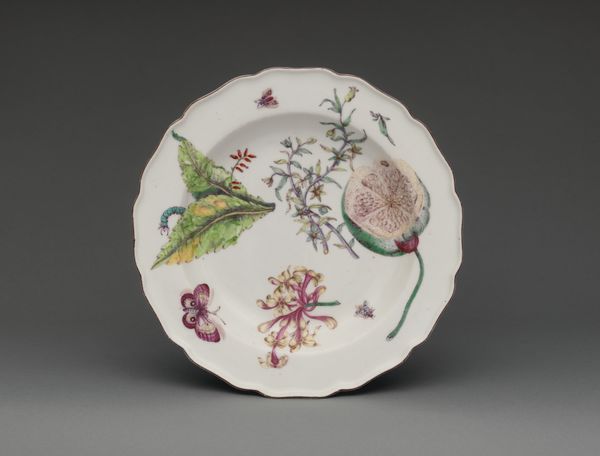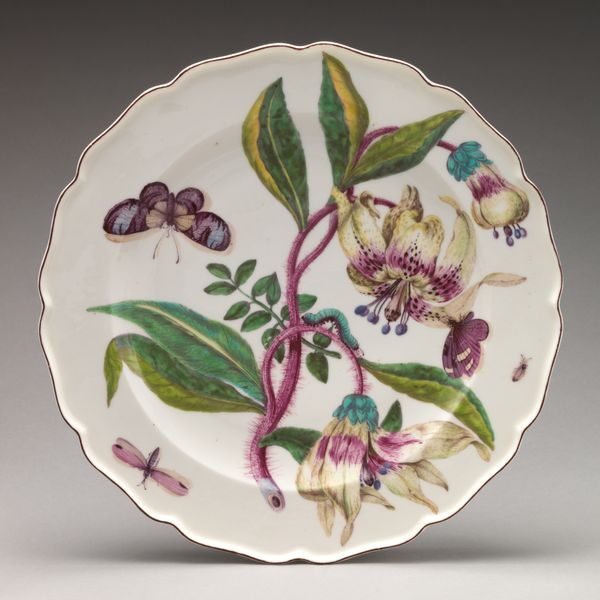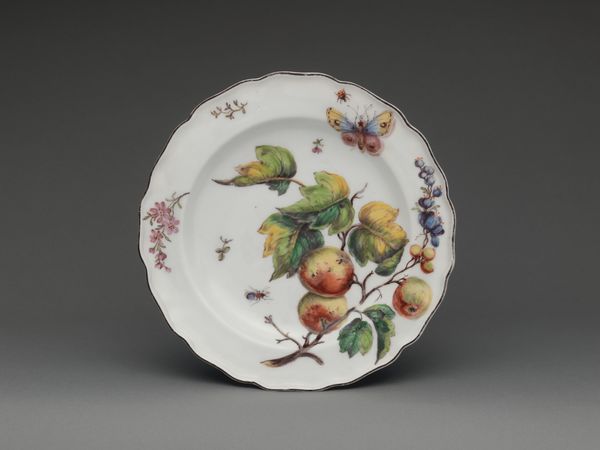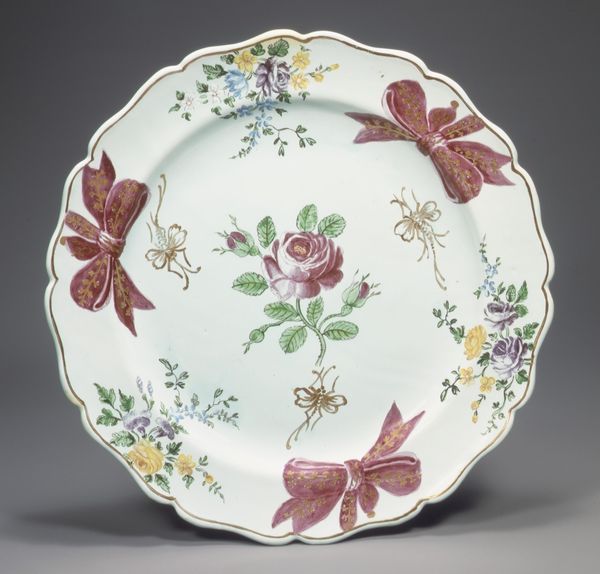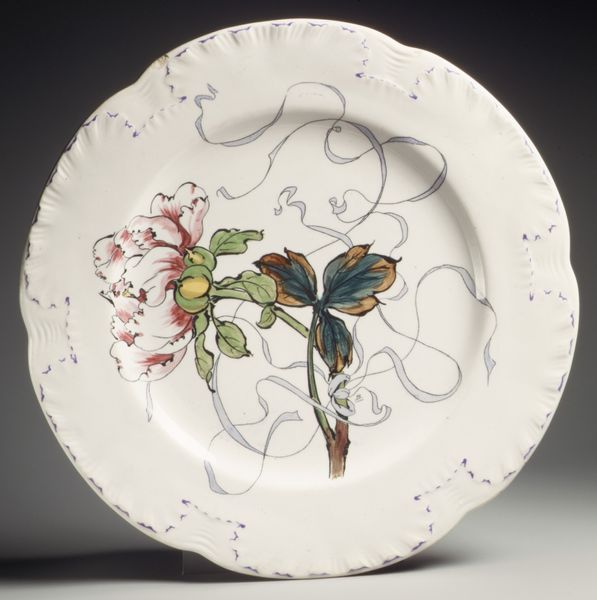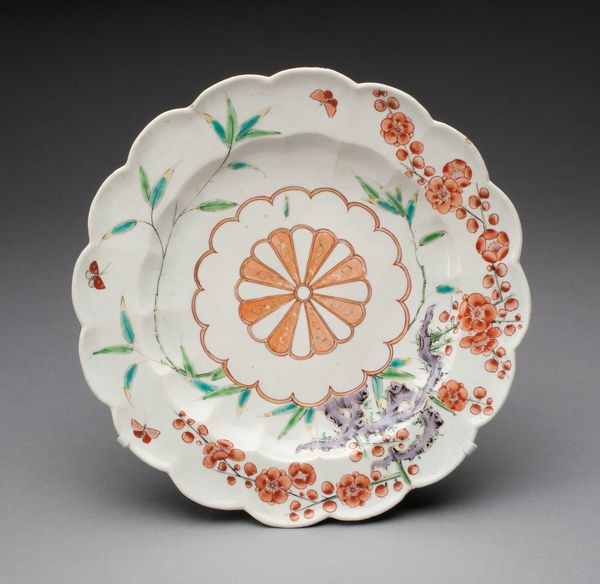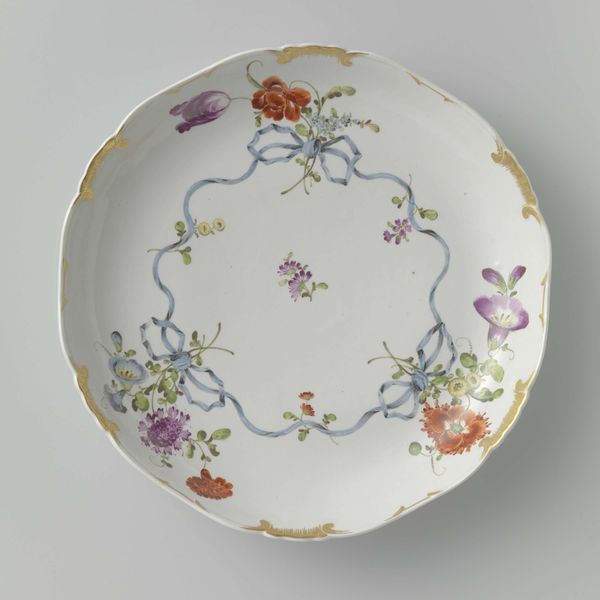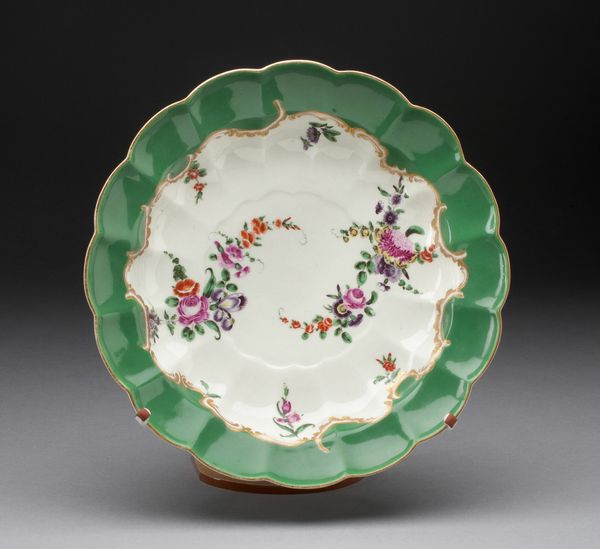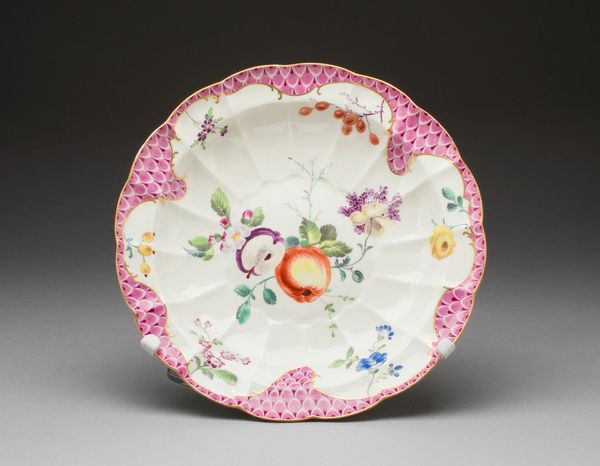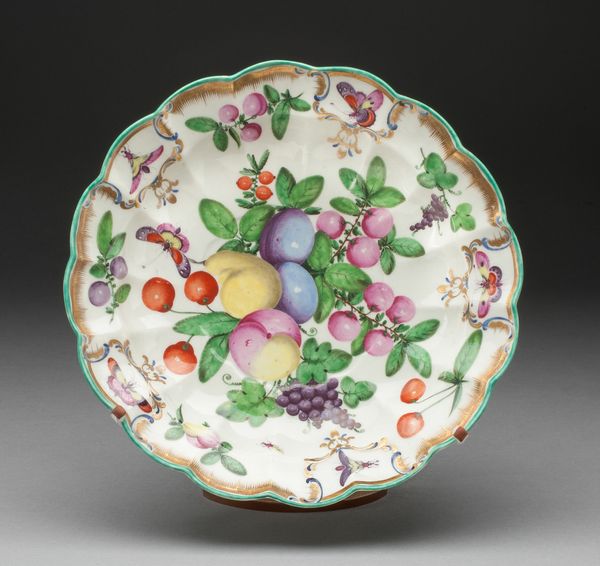
Botanical plate with a tropical specimen 1750 - 1760
0:00
0:00
painting, ceramic, porcelain, pendant
#
painting
#
ceramic
#
flower
#
porcelain
#
ceramic
#
decorative-art
#
rococo
#
pendant
Dimensions: Overall (confirmed): 1 7/16 × 9 × 9 in. (3.7 × 22.9 × 22.9 cm)
Copyright: Public Domain
Editor: This delicate botanical plate, crafted by the Chelsea Porcelain Manufactory around 1750 to 1760, showcases a vibrant tropical specimen. It has a certain Rococo charm to it, almost playful. How do you see this piece within its historical context? Curator: This plate isn’t just a pretty object; it speaks volumes about 18th-century power structures and colonial desires. Think about who could afford such luxury porcelain and where these "exotic" botanical specimens came from. This wasn't simply about appreciating nature; it was about possessing and displaying the spoils of empire, a very gendered act I should add. Editor: That’s fascinating! I hadn’t considered the colonial aspect so directly. The flowers and insects almost seem like trophies now. Were there any specific artistic influences shaping this kind of decorative work? Curator: Absolutely. We must consider the Linnaean system of classification, a hierarchical framework that sought to organize the natural world. These botanical illustrations, while seemingly innocent, contributed to a scientific gaze that objectified and controlled nature, often for the benefit of European colonial powers. Moreover, who was given the power to depict these objects? And from what perspective? What knowledge may have been excluded? Editor: So it's less about simple beauty and more about asserting dominance through knowledge and ownership? It reframes my whole understanding of decorative art from this period. Curator: Precisely. This plate is a window into a world of unequal power dynamics. Examining art objects like this one compels us to rethink our own assumptions about beauty, nature, and the legacy of colonialism and reminds us of what those in power have the luxury to ignore. Editor: I see that now. Thanks to your insights, I’m realizing how much these seemingly simple objects are connected to much larger systems of power. Curator: And that's the ongoing conversation we need to be having.
Comments
No comments
Be the first to comment and join the conversation on the ultimate creative platform.
